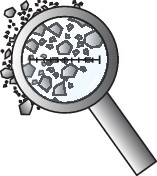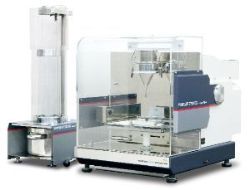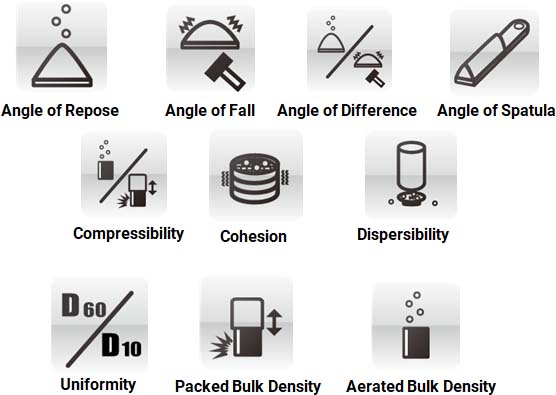- Industries & Machines Industries & Machines
- IIoT IIoT
- Service-Toll Processing Service-Toll Processing
- Material Material
- News News
- IR Information IR Information
-
Sustainability
Sustainability
Sustainability
- Introduction
- Hosokawa Micron Group "Basic Human Rights Policy"
- Sustaibality Policy - Mission Statement
- Editorial Policy
- Integrated Report
- Materiality & Strategy
- Technological contribution to a sustainable global environment
- Contributions towards a safer, more secure and prosperous society
- Sophistication of governance that supports business
- ESG Data Collection
- Sustainable Business Management ~ Finance
- Infromation Disclosure Based on TCFD Recommendations
- Jobs and Careers Jobs and Careers
-
About Us
About Us
About Us
- Greetings (Company Introduction)
- Hosokawa Micron Group "Basic Human Rights Policy"
- Management Philosophy
- Corporate Overview
- Corporate Profile
- Business Areas and Strengths
- Corporate History
- Hosokawa Micron Group
- Domestic Facilities
- Overseas Subsidiaries (Asia)
- Overseas Subsidiaries (Europe)
- Overseas Subsidiaries (America)
- Asian Agents
- Powder Technology Research Institute
- Industrial Property Rights
- Journals and Books
- Technical Information
- Annual Publication "Micromeritics"
- Compliance Charter
- Privacy Policy
- Cookie Policy
- Quality Principle

Industries & Machines
- TOP
- About Us
- Technical Information
- Details of Measuring Technology
- Greetings (Company Introduction)
- Hosokawa Micron Group "Basic Human Rights Policy"
- Management Philosophy
- Corporate Overview
- Corporate Profile
- Business Areas and Strengths
- Corporate History
- Hosokawa Micron Group
- Domestic Facilities
- Overseas Subsidiaries (Asia)
- Overseas Subsidiaries (Europe)
- Overseas Subsidiaries (America)
- Asian Agents
- Powder Technology Research Institute
- Industrial Property Rights
- Journals and Books
-
Technical Information
- Summury of Powder Technology
- Details of Millling technology
- Details of Classification Technology
- Details of Mixing/Blending Technology
- Details of Particle design Technology
- Details of Agglomeration Technology
- Details of Drying Technology
- Details of Dedusting Technology
- Details of Measuring Technology
- Annual Publication "Micromeritics"
- Compliance Charter
- Privacy Policy
- Cookie Policy
- Quality Principle
Details of Measuring Technology

Powder measurement is an important unit of operation for the design, operation and quality control of powder equipment. We develop and market instruments to measure the flowability index and floodability index of Carr (determined from angle of repose, tap density, bulk density, etc.), which are known as the characteristics of particle clusters (powder characteristics) important for equipment design and operation, the amount of coarse powder contained in products, the wettability of powder layers, tablets, and particle coating films, electrical characteristics such as charge distribution, and the shape and size of fine particles. We also develop and sell instruments for measuring the shape and size of fine particles.
When handling powders, it is essential to quantitatively describe their properties.
Powder properties include, for example, particle size, bulk density (the amount of powder packed per unit volume), and angle of repose (see below for details), which is an indicator of flowability.
Among these, the properties known as flowability and jetting are the ones that most clearly express the ease or difficulty of handling powders.
Therefore, it is necessary to measure these powder properties, but it is known that different measurement principles and methods can result in different measurement values even though the same property is being measured.
Also, there is no general method to convert those values to each other. There are even some measuring instruments whose results depend on the person making the measurement.
For this reason, the use of measuring instruments that can be used by anyone to obtain the same values with high accuracy, and that are widely used around the world, makes it possible to discuss, design, plan, and verify based on the same data.
The most famous method of quantification was proposed by Carr. This method is based on empirical data and features a variety of exponents for powder properties. Although it is a good representation of the behavior of real powders, Carr's paper did not specify the details of the measurements.
The Hosokawa/Micron Powder Tester is the world's first and original powder characterization system, created through direct communication with Carr to determine the measurement conditions.
 As a result, the "Powertester" is now widely used around the world and is recognized as a device that meets the above requirements.
As a result, the "Powertester" is now widely used around the world and is recognized as a device that meets the above requirements.
Exmaple of measured data
Click here for an example of powder characteristics measurement by Powder Tester (300 samples, sorry Japanese only)
In addition to all measurements, Carr's flowability index, jet flowability index, dynamic bulk density and Hausner ratio are also provided.
Examples of measurement samples: JIS standard powders, polymers, foods, mineral products, metals, pigments, inorganic oxides, and many others.
List of items that can be measured by the Powder Tester

| Characteristics | Content |
|---|---|
| Angle of repose | When the powder is dropped, it is deposited. This is the angle of the ridge of the mountain. |
| Angle of fall | This is the angle of the mountain ridge after the angle of repose has been measured and the mountain has been crushed by impacting the deposited mountain. |
| Angle of difference | The difference between the angle of repose and the angle of fall. |
| Cohesion | When powder is placed on the top of a three-stage sieve (each sieve has a different opening) and sifted for a predetermined period of time at a predetermined vibration intensity, some powder may form lumps due to the vibration. This value is obtained by calculating the mass of these lumps using a specified method. For relatively large powders that do not form lumps, the uniformity value is used instead of the cohesion value. |
| Uniformity | It is the ratio of the size of the cumulative 60th percentile of the particle size distribution to the size of the 10th percentile. Depending on the particle size, the degree of aggregation may be used instead of this value. |
| Angle of spatula | It is measured by using a metal plate called a spatula placed in the powder layer. This is the angle of the mountain ridge created by the powder left on the spatula when the powder layer is dropped. |
| Aerated bulk density | It is the mass per volume after dropping the powder into the container, filling it until it overflows, and scraping it off. |
| Packed bulk density | It is the mass per volume after scraping off when a container filled with powder is tapped for a specified number of times per unit time at a specified height for a specified period of time. As the volume is reduced by tapping, more powder is added. |
